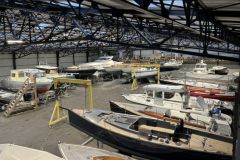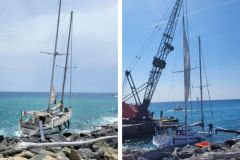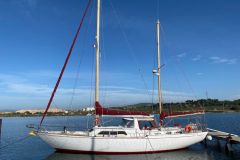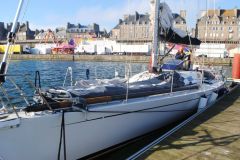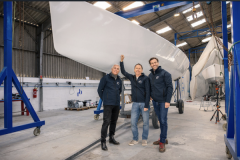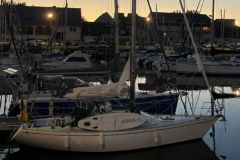Plywood or fiberglass?
In a refit project, the constraints are even more numerous than in the construction of a new boat. Available space in the workshop, accessibility, molding of shapes... All these parameters must be taken into account when choosing the material for each part and the construction method.
For the top of Duracell's new roof, Matt chose to build the piece in a sandwich with a foam core, just like the other sides. But the question of the bottom skin arose. The curvature of the part requires it to be shaped on the superstructure's bars, but at what stage? Matt initially envisages using thin plywood as the lower skin, fixed to the bars, on which the foam would be glued, before laminating an outer skin in fiberglass. This would allow to have a varnished interior in the saloon of the boat, but risks to be a bit heavy. After the advice of Internet users, he finally chooses another solution with a more classic sandwich panel.
Vacuum lamination
After testing small samples, it appears that foam laminated on one side with two fiberglass fabrics can be set up with the right curvature. So Matt decided to make a single flat panel in the shop, laminated on one side. Once positioned on the boat, it will then be finished on board with the second side.
Matt cuts and bevels the foam panels, before bonding them with filled epoxy. Once dry, he positions the fiberglass cloths and impregnates them, before adding a peel ply and doing a final debulking, then installing the vacuum bag. Indeed, for the first time on the project, the composite part is made under vacuum, in order to optimize the quantity of resin. If it is not an infusion, the weight gain remains positive compared to classical contact lamination.
See you in the next episode for a hopefully smooth set-up.





